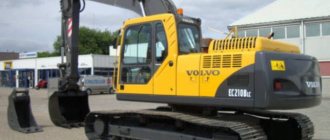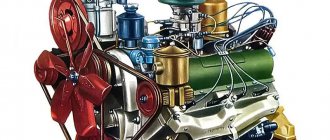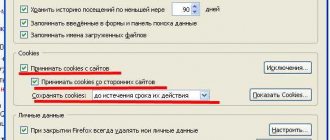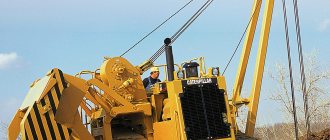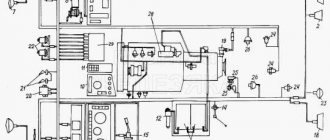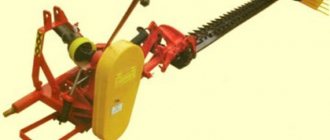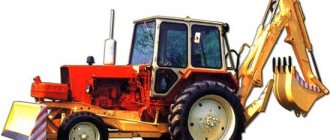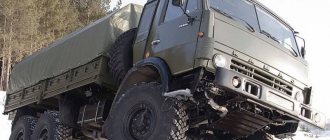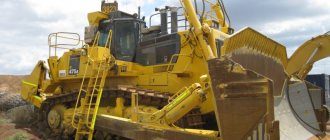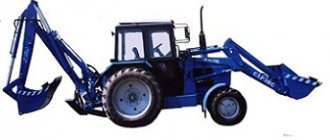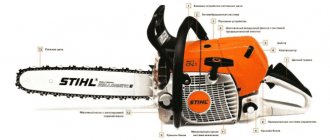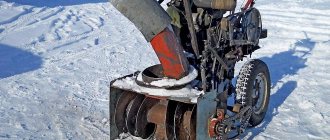History of creation
The production of this car began in 1966 at the Likhachev Automobile Plant in Moscow. The truck body was a platform made of wood. The platform was of a military or army type, and the tailgate was hinged. The side rails were also equipped with folding benches for 16 people.
Several modifications of the ZIL-131 machine were made. Onboard vehicles were produced with and without a winch, a series with unshielded electrical equipment - 131A, the so-called 131B truck tractor.
Then, in 1986, factories began to produce another version based on the 131st model. It was car 131N. In 1994, the production of these machines was curtailed because the production of newer models began. However, production at UAMZ factories did not stop and continued until 2002.
ZIL device
Initially, the ZIL-131 received the cabin from the 130th modification. But the military rejected it. Therefore, the truck soon acquired a “head” from the ZIL-165. This cabin featured a two-piece panoramic windshield that provided good visibility.
Regarding the appearance. At one time there was a version that the design was copied from the Ural-375. But this is not true. ZIL-131, ZIL-157K and Ural-375 were created taking into account the unified USSR standard for equipment design. This explains their visual similarity. But at the same time, everyone had different approaches to production.
The main advantage of the “one hundred and thirty-first” was its excellent stability, controllability and cross-country ability. And 6 driving wheels were able to demonstrate themselves in all their glory in the far north. Plus - a remote tire pressure control system. For example, if the situation required driving off the road onto the dirt, the driver could quickly lower the pressure, thereby ensuring better maneuverability. At the same time, he did not need to stop the truck. The system also saved the day when tires were punctured, since it could constantly pump up air.
Under the hood of the “one hundred thirty-one” there was a V-shaped 8-cylinder power unit with 150 horsepower. The engine received a “pumped” cooling system, which was equipped with a pre-heater. For use in the northern regions, this “thing” turned out to be simply irreplaceable. Since the appetite of the ZIL-131 was very impressive (about 40 liters per 100 kilometers), the car received a pair of fuel tanks with a capacity of 170 liters.
The power unit was accompanied by a 5-speed synchronized gearbox and a two-speed transfer case. As for the clutch, the truck received a dry clutch with one disc. The front axle was engaged automatically thanks to an electro-pneumatic mechanism. The maximum speed of the truck was 80 km/h.
The car turned out to be so successful that soon after it was launched into production, it began to be exported. Trucks most often went to Asian and African countries friendly to the USSR. The ZIL-131 was in production for more than twenty years. During this time, more than a million trucks in various modifications rolled off the assembly line. Then production was moved to the Urals, where the truck continued to be produced until 2002.
Development and production of the model
Together with the creation of an all-wheel drive truck for the army, engineers from the Stalin plant, and later from the plant named after. Likhachev, decided that it was necessary to create a fundamentally new machine. The principles and ideas that underlay the future 131st have already been thoroughly tested on a special, experimental vehicle, the ZIS-128. Certain shortcomings were identified in it, after testing the project was closed, and on the basis of the project the first prototype of the car was created. This turned out to be a unified truck with great prospects.
It turned out that “ZIL-131” appeared a little earlier than “ZIL-130”. Therefore, the developers equipped it with a 6-cylinder engine. Then manufacturers faced difficulties in producing exclusive parts. Therefore, a transitional model was released - “ZIL-165”. The car had features of the 157th model and the new experimental car of the 130th model.
Developers and engineers, through numerous tests, found that the design was again imperfect. That is why this car did not go into production. Engineers, in turn, began to intensively refine the 131st model.
In 1959, the machine was tested. Over the next three years there were big plans to launch mass production. However, due to temporary difficulties, production had to be postponed. Then the 130th hit the production lines only in 1967. This delay in the start of production benefited the new ZIL. Designers and engineers were able to greatly improve the design. After these modifications, the vehicle began to have a much greater carrying capacity and increased speed. The specialists also managed to reduce fuel consumption and reduced the turning radius by one meter. The cabin has become much more comfortable, and the suspension has become softer.
"ZIL-131", the design of which was constantly changing, was awarded a quality mark. This date (February 1974) was significant in the history of the plant. Likhacheva.
contents .. 1 2 3 ..ZIL-131 N and its modifications. Operating manual (S.I. Glazachev) - 1990
The manual contains a technical description of the design of vehicles, as well as basic information and recommendations for their operation.
For drivers and workers of motor transport enterprises
INTRODUCTION Vehicles of the ZIL-IZIN family are designed to transport various goods and people; towing trailer systems on all types of roads and terrain.
Cars are manufactured in the “U”, “Ta” or “HL” version of category 1 according to GOST 15150-69* and are designed for operation during non-garage storage at ambient temperatures from plus 55 °C to minus 45 °C, or minus 60 °C For. execution "HL"; relative air humidity up to 98% at 35 °C; air dust content up to 1.5 r/m8; wind speeds up to 20 m/s and in areas located at an altitude of up to 4000 m above sea level with a corresponding change in traction and dynamic qualities.
The car family consists of the following modifications:
ZIL-IZIN is the basic model of the family, a truck with a platform equipped with folding benches (Fig. 1).
ZIL-IZINA is a truck with a platform, with unshielded and unsealed electrical equipment.
ZIL-131NV is a truck tractor for towing special semi-trailers (Fig. 2).
ZIL-131 NS, ZIL-131 NAS are vehicles of the family in the “HL” version, intended for operation in the conditions of the Far North.
At the request of consumers, all cars and truck tractors of the family can be supplied as a chassis, without platforms or a fifth wheel, and can be used for mounting special bodies, vans and various installations on them.
Rice. 1. Car ZIL-131N
Rice. 2. Car ZIL-131NV
WARNINGS AND SAFETY REQUIREMENTS FOR ZIL-131 N VEHICLES
1. Proper operation of the vehicle and its longevity can only be ensured through regular maintenance in compliance with the rules set out in this manual.
2. During the first 1000 km, you should follow the special rules for operating a new car (see the section “Operating a new car”).
3. Before starting work, the driver must carefully inspect the car or road train and make sure that the car, trailer or semi-trailer and coupling devices are in good condition.
4. When using the jack, you should securely
Brake the car with the parking brake, wedge the wheels and secure the jack in a stable position. To avoid accidents when working under the vehicle, it is necessary to install a stand under the axle beam. . : '
5. When working with the spare wheel holder, you must be careful when lowering and lifting the wheel.
6. To avoid injury to the driver if the spare tire falls while lowering, apply the brake before removing the key from the hand winch nut.
7. For normal engine operation, A-76 motor gasoline is required.
8. Do not allow the crankshaft speed to be high immediately after starting a cold engine. This rule is especially important to observe in winter, since cold, thickened oil slowly flows to the crankshaft bearings, and at high shaft speeds the bearings can melt.
9. When handling a running engine, be careful to avoid injury from rotating fan blades and clothing being caught by drive belts.
10. Do not turn the pulley while rotating the fan blades.
11. When opening the radiator cap when the engine overheats, you should take precautions to prevent burns to your face and hands when steam is released from the radiator neck.
12. Leaded gasoline and low-freezing coolants are toxic. If they come into contact with your skin, wipe the area dry and wash with hot water and soap.
13. To avoid fire, do not allow fuel and oil to leak and do not use an open flame to heat the unit; Care should be taken when using the engine preheater in winter.
If a fire occurs, the driver must immediately eliminate the source of fire.
If there is fuel spilled on the road under the car, first of all you need to extinguish the fire there.
The fire must be extinguished from the Windward side, directing the stream from the fire extinguisher to the burning surface, and not to the flame. Leaking fuel should be extinguished by directing the stream from the fire extinguisher from bottom to top towards the hole from which the fuel is flowing.
14. It is forbidden to stop the engine during long descents of the car and when coasting, since this turns off the power steering pump, which causes an increase in the force applied to the steering wheel.
In addition, due to the compressor being turned off, the entire supply of air in the brake system reservoirs can be used up.
15. You should negotiate steep ascents and descents in low gears, since changing gears on ascents and descents can damage the clutch.
16. You need to start driving only in first gear.
17. It is necessary to engage reverse gear and downshift (first) gear in the transfer case only after the vehicle has come to a complete stop.
18. The vehicle is equipped with a towbar hook in accordance with GOST 2349-75*. This hook is marked with standard size 2. To prevent damage to the hook from “biting,” it is not allowed to operate vehicles with trailers with a diameter of the rod that forms the trailer coupling loop of more than 43.9 mm.
19. It is prohibited to drill, cut, or weaken in any other way the horizontal flanges of the frame side members.
20. When removing the propeller shaft from a vehicle or when installing it on a vehicle, do not use a mounting blade or other objects inserted into the hinge fork to rotate the shaft, as this will damage the mechanical seal of the hinge bearings.
21. Do not remove the power steering pump reservoir cap while the engine is running to prevent oil from escaping. In case of carrying out work with the cover removed and the engine running, the conditions set out in Section 1 must be observed. "Steering".
22. It is not recommended to use the parking brake when driving the vehicle, except in emergency cases.
23. You cannot start moving the car when the pressure in the pneumatic brake drive system is below 0.45 MPa (4.5 kgf/cm2). Condensate from receivers must be drained only when there is air pressure in the system.
24. All work on connecting and disconnecting wires should be carried out only with the engine off and the battery disconnected.
25. If a bimetallic fuse trips as a result of a short circuit, you should find and eliminate the fault in the fuse circuit, and then turn on the fuse by pressing the button until it clicks. It is prohibited to install homemade fuses.
26. To avoid damage to electronic devices during welding work, disconnect the battery from ground. The wire from the welding unit must be connected near the welding site.
27. Long-term operation of the ignition system using an emergency vibrator is unacceptable.
28. It is prohibited to disconnect the battery while the engine is running to avoid damage to electrical equipment containing semiconductor devices.
29. It is not allowed to drive a car for a long time with the hydraulic booster not working, as well as to tow it with the engine not running (without raising the front part), since this will overload the steering mechanism.
30. When leaving a rut or maneuvering, you must not move for more than 5 seconds with the steering wheel turned to its extreme position and turning force applied to it, since in this case the pump operates at maximum pressure and may fail due to oil overheating. In these cases, you should only keep the steering wheel turned without applying force to turn it.
The steering gear and pump, if necessary, should only be disassembled and reassembled by qualified mechanics in completely clean conditions.
31. The car is equipped with special thin-walled tires, the air pressure of which can be adjusted depending on operating conditions. When the air pressure decreases, overloading the tires is not allowed, so the vehicle load should not exceed the limits specified in the manual.
32. The system for regulating air pressure in tires must be constantly turned on when the vehicle is moving (tire valves are open). If the car is parked for 24 hours or more, the tire valves should be closed.
33. The air pressure in the tires should be reduced only to increase the vehicle's maneuverability when overcoming particularly difficult sections of the road. The mileage of tires at reduced pressure is limited, therefore it is prohibited to reduce the air pressure in the tires when driving the car on hard, broken roads. Reducing tire pressure below 0.05 MPa (0.5 kgf/cm2) is unacceptable, as this leads to tire failure.
34. When the tire valves are closed, the tire pressure control valve lever must be in the neutral position. The crane lever can only be used when all tire valves are open. To avoid a sharp increase in pressure, move the valve lever to the “Inflation” position smoothly. Moving the valve lever to the “Inflation” position with the tire valves closed damages the tire pressure gauge.
35. When replacing a wheel, unscrew the spool valve from the spare tire tire valve and connect the valve to the air pressure regulation system in the tire tires. Spool valves, as well as valve caps, must be stored in a set of spare parts, tools and accessories (SPTA).
36. At the factory, before transporting a car by rail, the tire pressure regulation system is turned off (the wheel shut-off valves are closed). To turn on the system during operation, you must open the tire valves.
37. It is strictly prohibited:
operate wheels with a deformed rim, bead and lock rings, in the presence of dirt, traces of rust, paint deposits in the lock groove of the rim and on surfaces adjacent to the tire;
use deformed tools for installation and dismantling work, as well as tools not provided for in the technical documentation of the vehicle (crowbar, sledgehammer and other heavy objects that can deform wheel parts);
start dismantling the wheel and tire without making sure that the air has completely left the tire;
inflate the wheel after installation outside the special fence (when inflating in the field, the wheel should be directed with the locking part down).
change the position of the bead and lock rings of the wheel while inflating or deflating the tire.
It should be remembered that, depending on the air pressure in the tire, a buoyancy force of 300 kN (30 tf) acts on the wheel lock.
Failure to comply with these instructions can lead to the most severe consequences, the responsibility for which falls entirely on the contractor and the administration of the enterprise.
38. To avoid an accident, you should not allow
people to the tensioned cable when using the car winch. ,
39. When rewinding the winch cable, you must wear gloves to avoid injury to your hands from the protruding ends of the cable strands.
40. The use of a vehicle chassis for the installation of specialized installations (fire engines, cranes, etc.), as well as the use of power take-offs to drive special mechanisms, is permitted only after agreement with the Department of Design and Experimental Works of the plant on the operating mode and operating procedure of the specialized installation or mechanism. Violation of this rule deprives consumers of the right to present claims to the plant for premature failure of car parts.
When operating and servicing a car, you must be guided by the “Rules of the Road”, as well as the “Safety Rules for Motor Transport Enterprises” (M., Transport, 1978).
For all work involving leaded gasoline, one should follow the sanitary rules for the storage, transportation and use of leaded gasoline, as well as the rules for safety and industrial sanitation.
Warnings include only the most important information. To operate the vehicle successfully, the driver must read the manual and follow all instructions contained therein.
contents .. 1 2 3 ..
Engine
"ZIL-131" was equipped with one power plant. It was an eight-cylinder carburetor unit. The power of this engine is 150 hp. With. At the same time, the number of revolutions is 3200 rpm. Engine torque at 2000 rpm. – 41 kgm. Fuel consumption – 240 g/h per horsepower. On average, per hundred square meters it consumes from 30 to 50 liters of gasoline. By today's standards, this is quite a lot. But in those days, no one thought much about fuel consumption due to its cheapness.
Dimensions and load capacity of ZIL 131
Dimensions of ZIL modification 131 and its lifting characteristics:
Overall dimensions of Zil-131
| Machine dimensions (LxWxH) | 7.04x2.5x2.48 m |
| Platform parameters (LxWxH) | 3.6x2.322x0.346 m |
| Height with awning | 0.569 m |
| Loading height | 1.43 m |
| Clearance | 0.33 m |
| Wheelbase | 3.35 m |
| Turning radius (outer) | 10.2 m |
| Fording and ascent | 1.4 m and 30° |
| Winch length | 50 m |
| Load capacity on asphalt road | 5 t |
| Load capacity on dirt road | 3.5 t |
| Permissible trailer weight | up to 4 t |
| Maximum truck weight | 10.425 t |
Suspension
Front suspension; it is dependent, operating on two springs with sliding rear ends. Shock absorbers are also used. As for the rear suspension, it is balanced, on two springs with six bars. The brakes are represented by a system based on drum mechanisms and pneumatic as well as mechanical drive.
The steering mechanism consists of a screw, a ball washer and a rack, which engages with the toothed sector of the shaft. There is power steering.
Design features of the ZIL 131 cabin
The cab of the ZIL 131 truck is frame. It is sheathed with sheet metal and insulated from the inside. All this is necessary to ensure a high level of comfort for the driver, who will be able to drive the car even in the most severe frosts. The cabin is ventilated using vents and by opening the side windows. The moving elements are equipped with high-quality rubber seals. This allows the doors to be closed as tightly as possible.
On the dashboard of the machine there is a whole range of equipment that allows you to monitor the main technical parameters of the engine:
- determining the amount of gasoline in the tank;
- voltmeter and ammeter;
- sensor displaying oil pressure;
- speedometer;
- temperature level sensor;
- tachometer.
All tools for driving are within reach. The seats located in the cabin do not have great capabilities in the field of position adjustment. But they are designed to be as comfortable as possible for the average person.
Electrical and load capacity
The battery voltage is 12 V. There is also a generator. Ignition is represented by the Iskra system.
The payload capacity of this vehicle is 3750 kg, subject to driving on most roads. If the road is good asphalt and the car is without a trailer, then the load capacity increases and is about 5000 kg. The curb weight of the vehicle is 10,185 kg.
As already written above, the car was produced in various modifications. And if most cars were produced for gasoline, then in 1986 diesel trucks “ZIL-131” began to roll off the assembly line. A truck of this modification received the letter “N” in its model name.
Known modifications of the ZIL 131 car
ZIL 131 is such a successful model that it was used as a base for the production of many modifications. The ZIL 131 KUNG machine turned out to be especially popular and in demand in the national economy. The frame of this car is made of angles and channels. They are sheathed on top with metal sheets, which provides increased durability and strength.
Inside, the car body is insulated with foam plastic or other heat-insulating material, after which it is lined with plywood, additionally treated with an antiseptic. All this significantly improves the technical characteristics of the car and expands its scope of application. These trucks differ from other modifications in a variety of equipment:
Fvua -100N-12F filter ventilation unit
- presence of a heating system;
- van ventilation equipment;
- various household appliances;
- lighting system in the form of lampshades.
This modification is equipped with a unique filtration unit FVUA-100N-12. It takes air from the environment, cleans it, and then supplies it to the cabin.
The heating system had a high level of autonomy. Diesel fuel was burned to produce heat.
Other popular modifications of the legendary ZIL 131 truck
Based on the ZIL 131, other, no less popular, models were produced:
- ZIL 131NA. Equipped with unshielded electrical equipment;
- ZIL 131V. Used for transporting goods by trailer, truck tractor;
- ZIL ATZ-3. These vehicles were primarily used as fuel tankers;
- ZIL MZ-131. Used as oil refillers;
- ZIL AC-40. The car was used as a fire truck.
